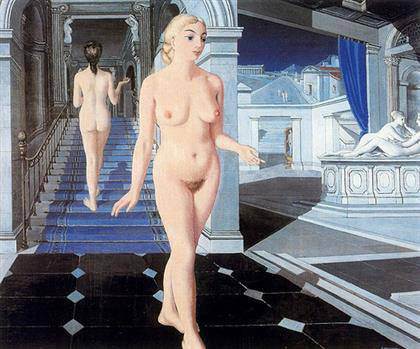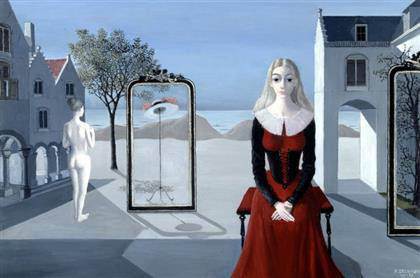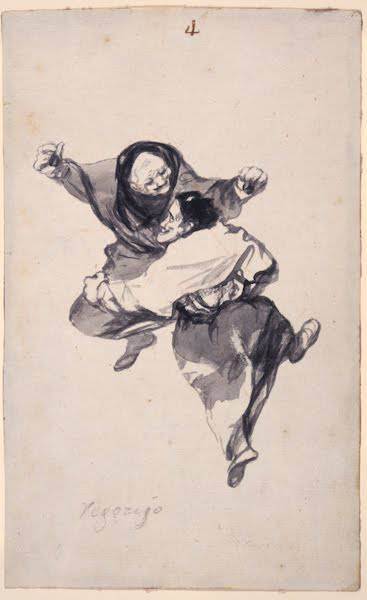
Paul Delvaux
L ́escalier, 1946
Oil on triplex. 122 x 152,5 cm
Museum voor Schone Kunsten, Gante

Paul Delvaux
L ́Ermitage, 1946
Oil on canvas. 85 x 129 cm
Private Collection
Paul Delvaux: Walk with Love and Death at the Thyssen ‘Paul Delvaux: A Walk with Love and Death’ – The Museo Thyssen-Bornemisza is presenting an exhibition on the Belgian painter Paul Delvaux (1897-1994). 24 February to 7 June 2015]]>
Source: Museo Thyssen-Bornemisza
“Paul Delvaux: A Walk with Love and Death” presents a thematic survey featuring more than 50 works loaned from public and private collections in Belgium, in particular that of Nicole and Pierre Ghêne, which constitutes the nucleus of this project and is represented by a loan of 38 works. Fascinated since 1962 by the work of Delvaux, Pierre Ghêne began his collection in the early 1970s. Since that time it has continued to grow and now numbers hundreds of them, most of which are in the Musée d’Ixelles.
The exhibition focuses on the five principal themes in Delvaux’s iconography, all revolving around love and death: Reclining Venus, a recurrent motif in his work which refers to his unconditional love for women; The Double (Couples and Mirrors), which focuses on seduction and the relationship with the alter ego; Architectures, which focuses on the omnipresent buildings in his oeuvre, particularly classical ones but also examples from Watermael-Boitsfort (Brussels, Belgium) where he lived; Train Stations; which are essential to the construction of his pictorial personality, and finally, The Skeleton of Life, which analyses Delvaux’s fascination with that motif, which he used as substitutes for live figures engaged in everyday activities.
Born into a family of lawyers, Delvaux received his father’s permission to attend the Academy of Fine Arts in Brussels where, after briefly studying architecture, he opted for decorative painting and graduated in 1924. His early works reveal the influence of the Flemish Expressionists such as Constant Permeke and Gustave de Smet, who represented the Belgian avant-garde of the time. At this early date Delvaux began to reveal an interest in depicting the human form, particularly women, which would remain a constant artistic concern throughout his career.
In the mid-1930s Delvaux discovered Surrealism and participated in the International Surrealism Exhibition in Paris in 1938 and in subsequent ones in Amsterdam and Mexico. Nonetheless, he did not join the group and was concerned to maintain his artistic independence.
Related content
Retrospective on Raoul Dufy at Thyssen Museum (exhibition, 2015)
Follow us on:

